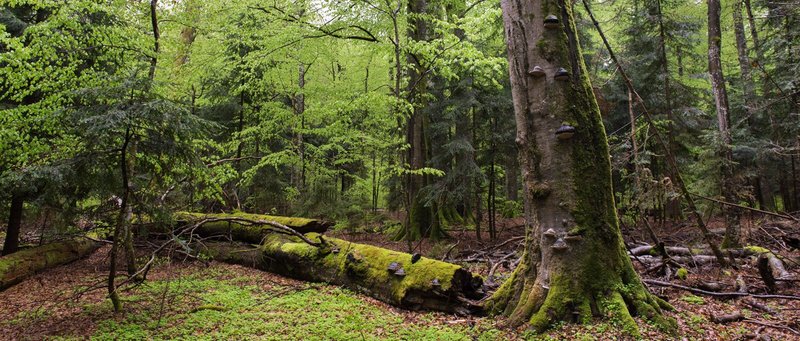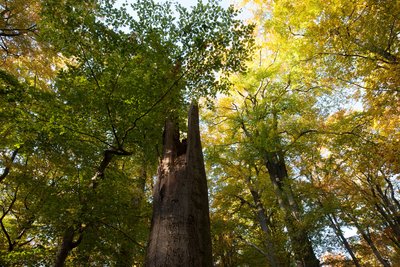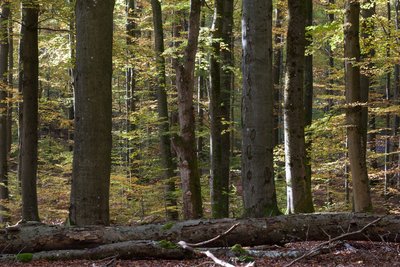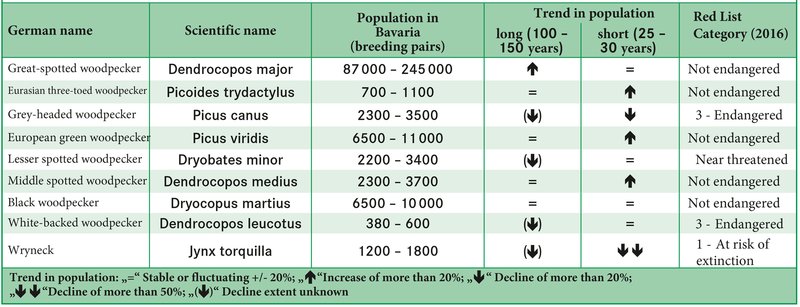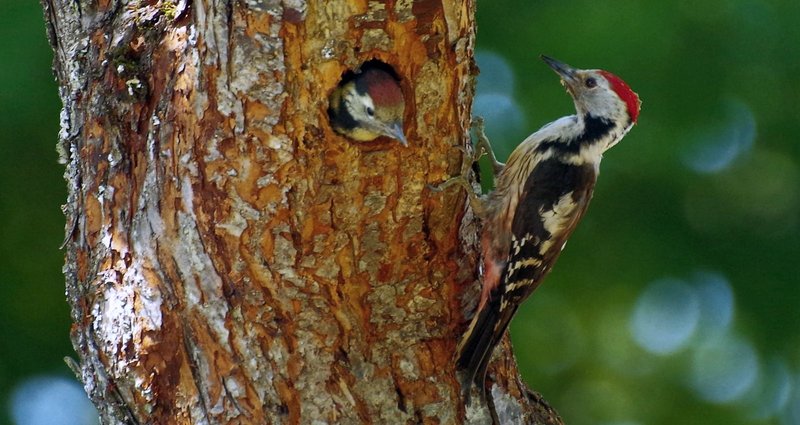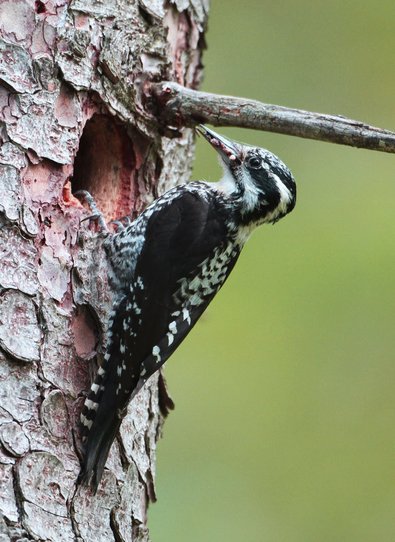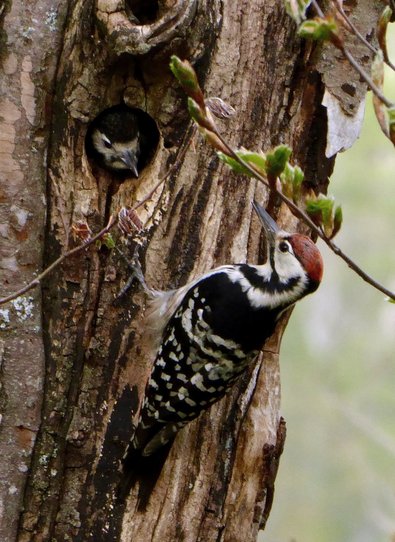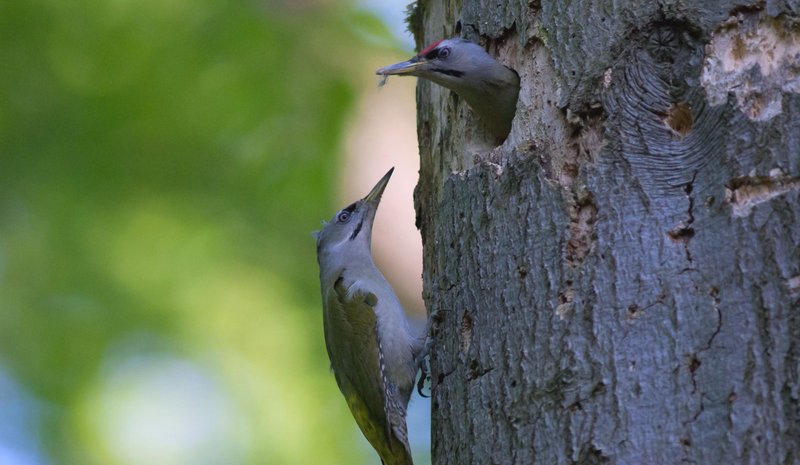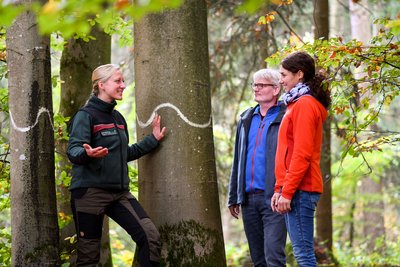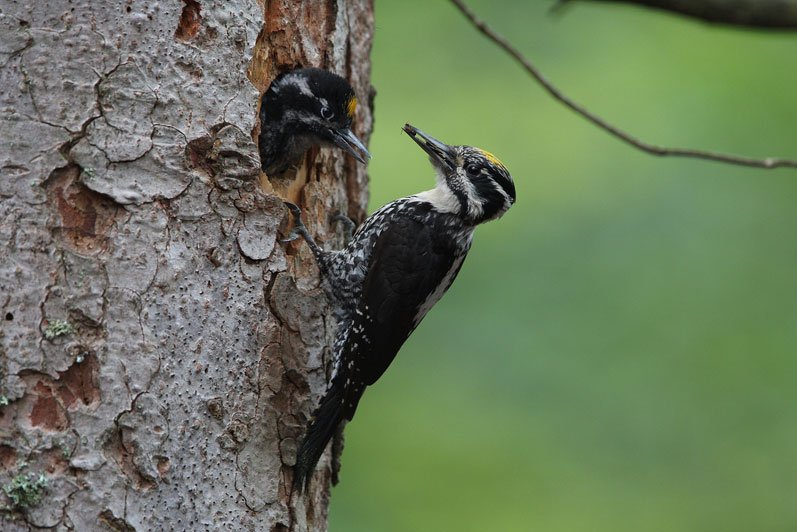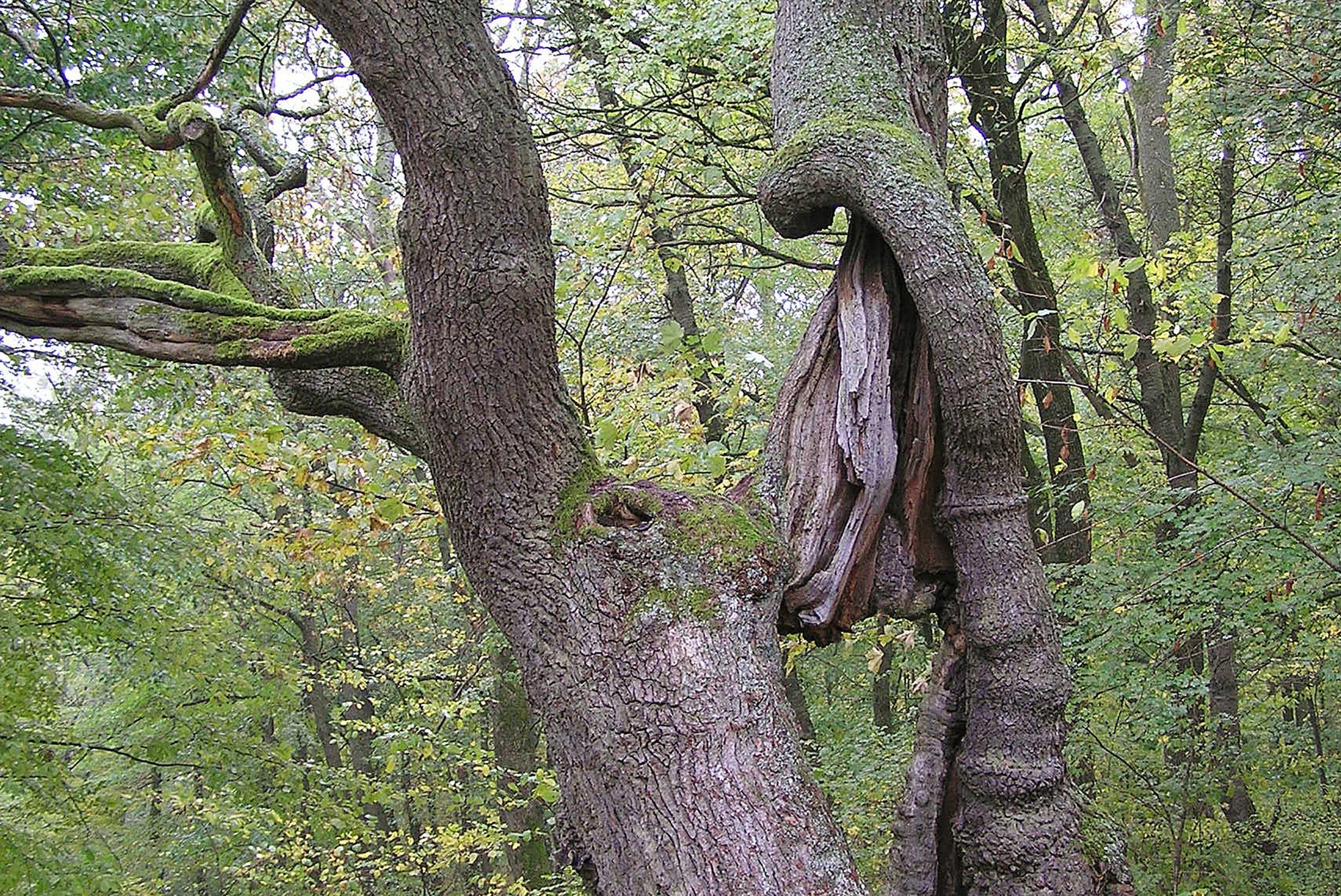The forest and with it the habitat of forest-dwelling bird species has been changed dramatically by humans over the past centuries. In the once completely forested region that is now Bavaria, just 36% of the land area is currently still covered by forest. With the exception of higher areas and special sites, these forests would naturally be dominated mainly by deciduous and mixed deciduous forests, especially beech. The current high evergreen proportion of over 60% of coniferous species is man-made and has historical reasons. For decades now, however, the forest has been being converted continuously back to mixed stands rich in deciduous species.
Forests are becoming more natural again
While changes in land use very quickly become obvious in open countryside, they usually take decades in the forest. But the fact that things are also happening in the forest are shown by the results of the national forest inventories: both the stand age and the proportions of deciduous trees native to the site, and deadwood and habitat trees have increased. These changes are favourable for very many species. Numerous bird species have for example increased in population in the last 25 to 30 years.
Old forest as a habitat
Many native animal species typical of the forest are adapted to forests rich in deciduous trees and interspersed with mainly small areas of old trees and decaying timber. Trees with rotting and woodpecker holes – so-called cavity trees – are particularly valuable, and indispensable in close-to-nature forest management. Cavity trees like this not only provide nesting places for woodpeckers, but also for owls, tits, hornets, bats and many other species groups.
Old forests also offer a basic stock of dead trees. The quality of the deadwood – for example its dimensions or the degree of decay – also plays a role here. The different bird species use deadwood in all sorts of different ways, and with differing intensity. Deadwood serves as a food source, nesting habitat, roosting site and also as a perch for singing or drumming. Even an increase of just 1% to 3 % of the trunks in the proportion of deadwood in a forest stand leads to a doubling of the population density of cavity-nesting birds.
Forests like this with several stages of development are a common habitat of woodpeckers, bats and wood-dwelling beetle species – and thus also an ideal in forest nature conservation.
Most of these structures can also be provided by close-to-nature silviculture. Small-scale felling measures (e.g. group selection cuts) and regeneration measures (e.g. planting of small groups of trees under the canopy) can create the desired mosaic of particular forest development phases. The conservation of habitat trees and the leaving of thicker pieces of deadwood both standing and lying is a way of imitating the ageing and decaying phases of the natural forest. In addition, gaps caused by individual old trees falling give rise to an uneven crown structure with small gaps in the stand.
Woodpeckers as an absolute umbrella species in nature conservation
Woodpeckers are a species group that is relatively easy to record and well-studied. They are all cavity-breeders, and cover all forest habitats in Bavaria, with their habitat requirements ranging from sparse, semi-open landscapes to extensive areas of contiguous forest. Because of their strong attachment to central habitat structures such as cavities and deadwood, and their relatively large breeding grounds and year-round use of their territories, they are regarded as “umbrella species” in forest nature conservation. If we protect them, we protect most of the other species living in these forest habitats.
Nine woodpecker species are native to Bavaria. These are on the one hand the spotted woodpeckers, namely the great spotted woodpecker, the middle spotted woodpecker, the white-backed woodpecker and the lesser spotted woodpecker. These woodpeckers are distinguishable by the colouring of their plumage. They have strong, contrasting black and white plumage and they usually have red markings on their heads and other parts of the body.
Then there are also the black woodpecker, the European green woodpecker and the grey-headed woodpecker. These three species feed on ants and look for their food not just on tree trunks, but mainly in ant heaps on the ground. The Eurasian three-toed woodpecker is a coniferous forest specialist in mountainous regions. The Eurasian wryneck (Jynx troquilla) – the only migratory bird among these nine woodpeckers – is a species of semi-open landscapes, and occurs in meadow orchards or pasture landscapes.
Positive development in old forest species in Bavaria
Over the last 25 to 30 years, consistent or positive trends in the population development of all of the species have been observed - except for the grey-headed woodpecker and wryneck (see table). Here is a summary of the most important developments:
Middle spotted woodpecker: Of all the woodpeckers, the development in the population of the middle spotted woodpecker is particularly encouraging. This is one of 25 species for which Germany bears the greatest responsibility worldwide. As a “poking” woodpecker on old trees with coarse bark, it feeds all year round almost exclusively on insects. As it constructs a new nesting cavity each year, it also needs lots of trees with rotten spots throughout its large territory consisting of several hectares. Its population increase is clear evidence not only that the proportion of the area covered by native deciduous trees and the average age of those trees has increased, but also that the quality of the habitat has improved.
Eurasian three-toed and white-backed woodpeckers: Also pleasing is the growth in the populations of the three-toed and white-backed woodpeckers in the Bavarian Alps. These two resident bird species are among the rarest forest birds in Germany. They establish their nesting cavities in dead trees or trees with trunk injuries or fungal infections. An abundant supply of deadwood is thus a basic requirement in their habitats.
With just under one breeding pair per hundred hectares of forest, the coniferous forest-dependent three-toed woodpecker is currently to be found almost everywhere at high altitude in the Bavarian Alps. It is not as a rule limited by the range of food available in the nesting season, but by the food supply in winter. Particularly when there is a lot of snow, it finds its food mainly in standing deadwood. The increase in the population of this species is due to a better supply of deadwood.
The white-backed woodpecker is strongly dependent on forests very rich in deadwood and with a high proportion of deciduous trees. Studies in the Alpine region show its strong attachment to forest areas rich in deciduous trees and with small islands of around 40 m³ of deadwood in the middle of its territory, around the nesting site. For these sites to be adopted as breeding sites, however, there must also be more than 30 m³ of deadwood per hectare on an area of 30 to 80 hectares. Once also widespread in the lowlands, this species still has a long way to go before it can be said to have re-colonised extensive areas of the forests. Its populations are however stable and there is evidence that it has returned to some areas.
Grey-headed woodpecker: This species is widespread throughout Bavaria, but rare everywhere. With regard to the mix of trees in the forest, it is not very choosy, as long as there are lots of recurring small islands of large deciduous trees with rotten spots in which it can establish its nesting cavities. Also specialised on insects, it requires large quantities of deadwood in direct sunlight in closed forest areas, or sparse forests with lots of ants. In the large deciduous forest areas of Franconia with high levels of old wood, its populations seem stable. It also settles with a high population density in alder groves or on moorland rich in deciduous trees. On semi-open landscapes, its populations are however declining significantly. Old meadow orchards, pasture land, silvopasture, or deciduous forests rich in old trees and interspersed with barren grassland have become very rare – and with them many foraging habitats with short grass and lots of ants. This development is also reflected in the declining populations of the wryneck.
Despite the successes, there is a need to act
In the last few decades, much has been achieved in terms of the conservation of “species of our native forests”. The populations of some typical forest species, such as the middle spotted woodpecker, white-backed woodpecker or also the lesser spotted woodpecker are however still relatively small, despite increasing or stable trends. Central structures such as deadwood or habitat trees are also ephemeral and must thus continually be replaced. A natural replacement of habitat trees and deadwood can be ensured if old trees are left standing. It is especially those trees that do not make the grade as “the management ideal” in commercial forestry that are interesting for birds. With this in mind, we can leave a few “distinctive” trunks standing right from the juvenile stage in the trees’ lives, as so-called habitat tree “candidates”.
As a tree ages, the probability that it will become a habitat tree rises. When these habitat tree candidates or existing habitat trees are conserved in the stand, they become new sources of food and even nesting trees for birds. Treecreepers (Certhiidae) will nest in pockets in the bark, for example, while the middle spotted woodpecker (Dendrocoptes medius) and lesser spotted woodpecker (Dryobates minor) search for insects in cracks in the bark.
Habitat protection is eligible for subsidies
To establish or maintain central structures in your forest, you can also make use of the support programmes offered by the forestry and environmental authorities. The forestry funding programme WaldFÖPR offers support for numerous measures, thus contributing not only to climate protection, but also to the protection of biodiversity and to the conservation of habitats. The maintenance and tending of forests that are well adapted to the relevant site are the key to a flourishing characteristic bird population.
The Forest Contractual Nature Protection Programme (“VNP Wald”) is also important for the implementation of conservation goals. It provides grants for voluntary nature and species conservation measures implemented by private or corporate forest owners in their forests. Your contact partners for the subsidy programmes are the local Offices for Food, Agriculture and Forestry (Ämter für Ernährung, Landwirtschaft und Forsten).

